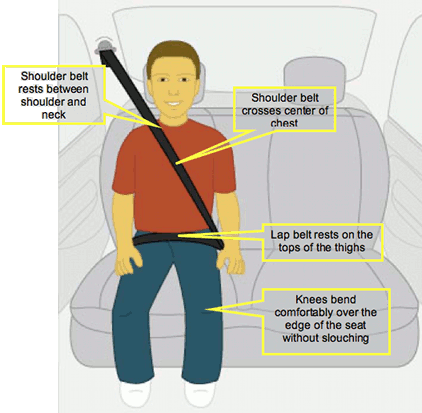By Kelly Youngblood
Recently, we’ve started letting our oldest child who is 10 years old (and big for his age) ride in the front seat. Our logic was he’s as tall and weighs as much as an adult so why wouldn’t he be OK?
Apparently, our logic isn’t aligned with what the experts say on the matter.
As with so many parenting issues, the question of when to let your child ride in the front seat can be confusing. But I did discover the age most experts agree on and why.

The American Academy of Pediatrics, the National Highway Traffic Safety Administration and the Centers for Disease Control and Prevention all recommend that children stay in the back seat until age 13.
Dr. Susan Bolton, a pediatrician at Christie Clinic, says the size of the child doesn’t matter. It’s all about their age.
“All children under 13 years of age should ride in the back seat regardless of height and weight,” Bolton said.
Bolton says there are several reasons why. A major factor is younger children haven’t fully developed their bones yet, which increases the risk to vital organs in a motor vehicle crash.
“Although children under age 13 may weigh as much or be as tall as some adults, their hip bones are not fully developed,” Bolton said. “Even if the lap belt starts out in the right place, it can ride up onto the abdomen in children which increases the risk of injury to the abdominal organs in a motor vehicle crash.”
Bolton added the sternum (the breast bone) may not be fully developed until 11-17 years of age, which puts the child at increased risk of injury to the heart and lungs in a crash.
Also, the three items in the vehicle that are responsible for the most injuries during a motor vehicle crash are the windshield, the dashboard and the air bag. Bolton said children properly buckled up in the back seat are not likely to come into contact with these items.
Studies have shown that after the age of 13, the risk of injury to a child in a crash becomes equal to the risk in an adult.
The Illinois Secretary of State guidelines, which are based on AAP recommendations, also say children should be kept in the back seat until they are teenagers.
In fact, the state of Illinois guidelines go on to say 8-12-year-olds who aren’t big enough to fit properly in a seatbelt alone should sit in a booster seat. (The image below shows how a seatbelt should properly fit your child.)

The general consensus says seat belts don’t typically fit children properly until they are at least 57 inches tall (4 feet 9 inches) and weigh between 80 and 100 pounds.
That means small 7th graders should be in a booster seat? I imagine that would be a tough sell for some tweens.
I’m guessing it’s also going to be difficult for my son when I tell him he has to return to the back seat with his little brother and sister.
I’ll just blame it on the experts.
For more information about children’s seatbelt safety laws and guidelines, go to the Secretary of State’s website.

